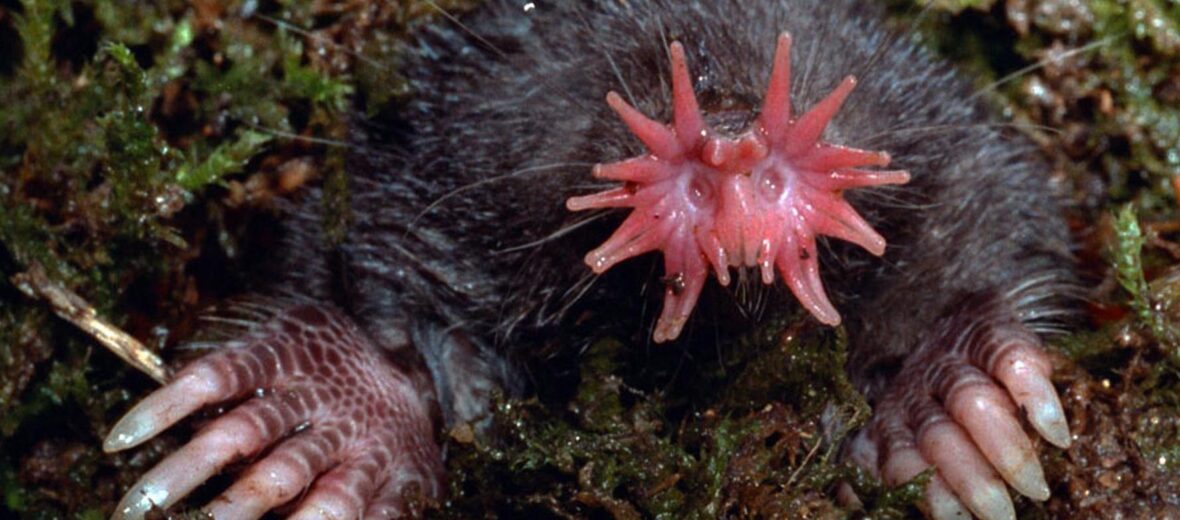
One of the more unusual looking creatures in the animal kingdom is the star-nosed mole. This is a small mole that lives in marshes, forests, and wetlands of North America. They have a very unique star-shaped nose that is ringed with 22 fleshy appendages called “rays”, that they use to feel their way around, since their eyesight isn’t all that great. They even use their odd looking nose to hunt prey. These critters are classified as Least Concern by the IUCN. This article is on request from Kim.
First the Stats…
Scientific name: Condylura cristata
Weight: Up to 1.7 ounces
Length: Up to 4.6 inches
Lifespan: Up to 4 years
Now on to the Facts!
1.) The “rays” of their nose are constantly moving and feeling for prey.
2.) They actually don’t really use their nose for smelling, but rather to feel their way around in the darkness for food.
3.) The nerves on their noses are the most sensitive touch organ of any known mammal. Their noses have over 100,000 nerve fibers, which is about 5 times the number found in the human hand.
4.) These sensory receptors are known as “Elmer’s Organs” and they actually detect seismic vibrations around them. This helps them find their way around and to hunt.
5.) Star-noses are cathemeral (active during the day and night).
But wait, there’s more on the star-nosed mole!
6.) Even though mammals are known to lack the ability to smell underwater, the star-nosed moles can actually sniff underwater by blowing bubbles towards an object, and then re-inhaling the same air bubbles to retrieve the scent.
7.) Out of the 39 known species of moles, the star-nosed mole is the only one that lives in swamps and excels at swimming.
Did you know…?
Star-nosed moles are able to identify and eat prey in less than 2/10 of a second, taking an amazing 8 milliseconds to figure out whether a particular item is edible or not!
8.) Digging comes natural to you if you have shovels for feet. They are able to dig tunnels up to 100 feet long!
9.) Fat is stored in their tails, which causes it to swell up to 4 times larger than normal, and is relied upon to get them through lean times during winter.
10.) Living in loose colonies isn’t something a mole typically does. But these ones do.
But wait, there’s even more on the star-nosed mole!
11.) Their prey of choice is typically worms, mollusks, aquatic insects, small amphibians, and small fish.
12.) Mating takes place between February – March.
13.) Females produce between 2 – 7 pups between April – May.
Now a Short Star-Nosed Mole Video!
Also, check out the Critter Science YouTube channel. Videos added frequently!
Want to suggest a critter for me to write about? Let me know here.




Leave a Reply